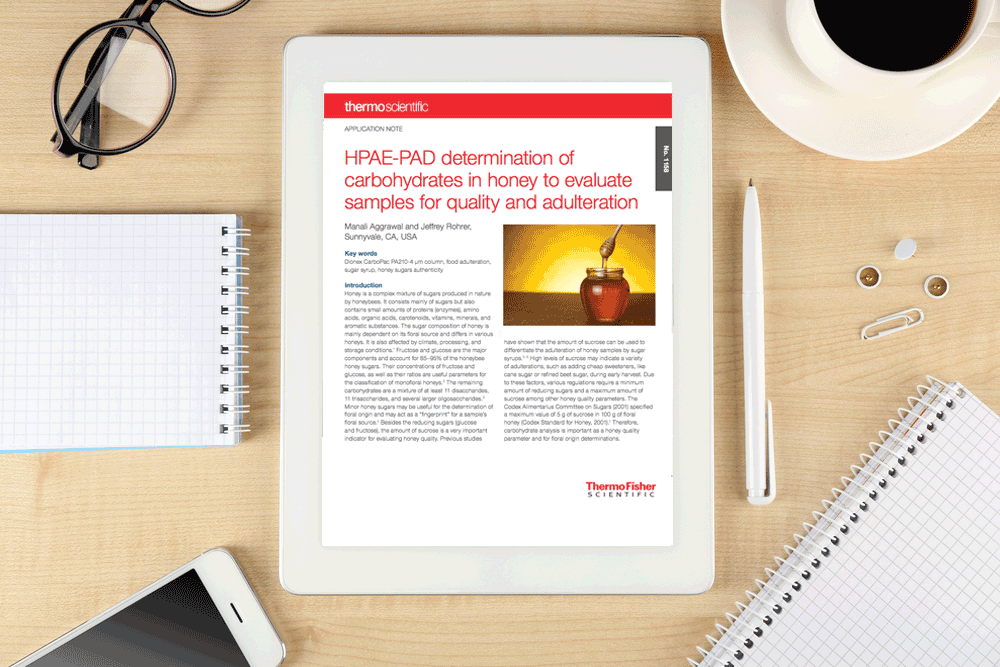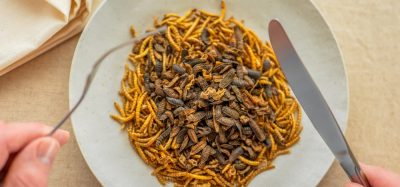App note: HPAE-PAD determination of carbohydrates in honey to evaluate samples for quality and adulteration
- Like
- Digg
- Del
- Tumblr
- VKontakte
- Buffer
- Love This
- Odnoklassniki
- Meneame
- Blogger
- Amazon
- Yahoo Mail
- Gmail
- AOL
- Newsvine
- HackerNews
- Evernote
- MySpace
- Mail.ru
- Viadeo
- Line
- Comments
- Yummly
- SMS
- Viber
- Telegram
- Subscribe
- Skype
- Facebook Messenger
- Kakao
- LiveJournal
- Yammer
- Edgar
- Fintel
- Mix
- Instapaper
- Copy Link
Posted: 27 April 2017 | Thermo Fisher Scientific | No comments yet
High Performance Anion Exchange chromatography coupled with Pulsed Amperometric Detection (HPAE-PAD) is one of the most useful techniques for carbohydrate determinations. This application note demonstrates a method to assay fructose and glucose, plus the entire profile of di- and trisaccharides in honey…
Introduction
Fructose and glucose are the major components in honey and account for 85–95% of the honey sugars. The concentrations of fructose and glucose, as well as their ratios are useful parameters for the classification of monofloral honeys. The remaining carbohydrates are a mixture of at least 11 disaccharides, 11 trisaccharides, and several larger oligosaccharides. Minor honey sugars may be useful for the determination of floral origin and may act as a “fingerprint” for a sample’s floral source. Besides the reducing sugars (glucose and fructose), the amount of sucrose is a very important indicator for evaluating honey quality. High levels of sucrose may indicate a variety of adulterations, such as adding cheap sweeteners, like cane sugar or refined beet sugar, during early harvest. Due to these factors, various regulations require a minimum amount of reducing sugars and a maximum amount of sucrose among other honey quality parameters. The Codex Alimentarius Committee on Sugars (2001) specified a maximum value of 5 g of sucrose in 100 g of floral honey (Codex Standard for Honey, 2001). Therefore, carbohydrate analysis is important as a honey quality parameter and for floral origin determinations. High Performance Anion Exchange chromatography coupled with Pulsed Amperometric Detection (HPAE-PAD) is one of the most useful techniques for carbohydrate determinations and this application note demonstrates a method to assay fructose and glucose, plus the entire profile of di- and trisaccharides in honey.









